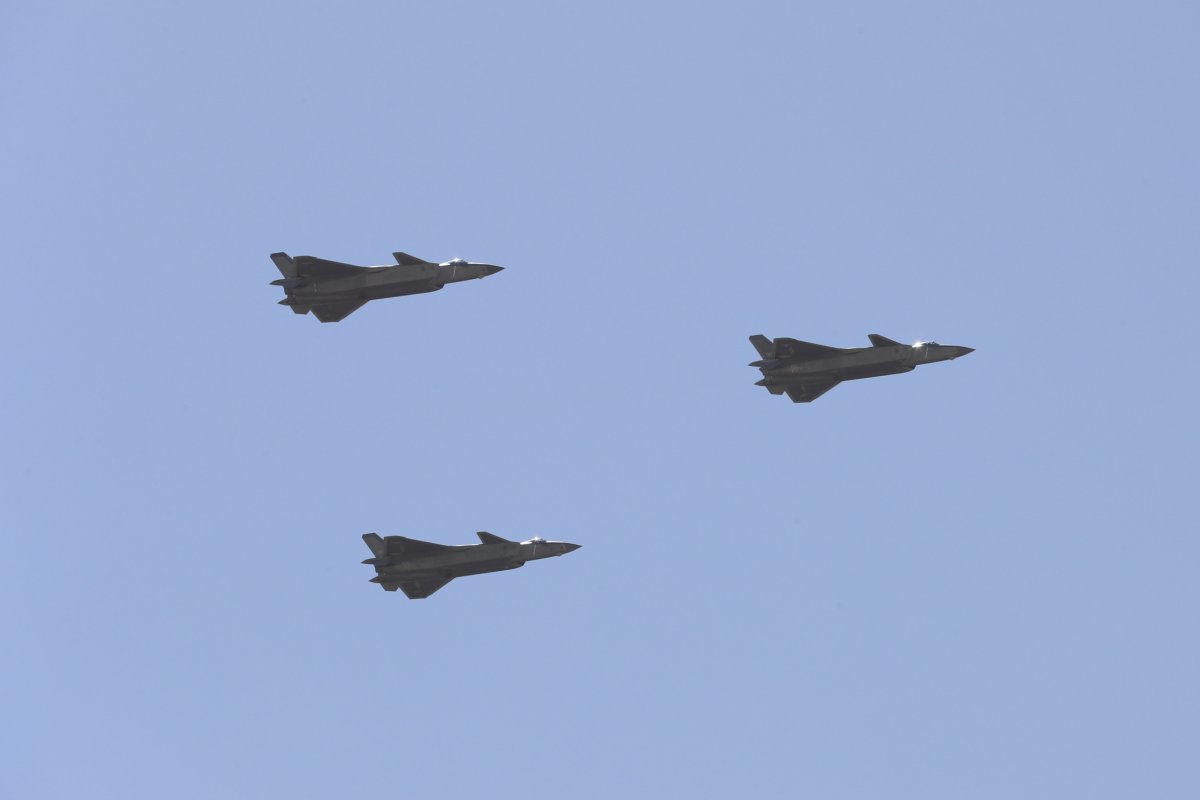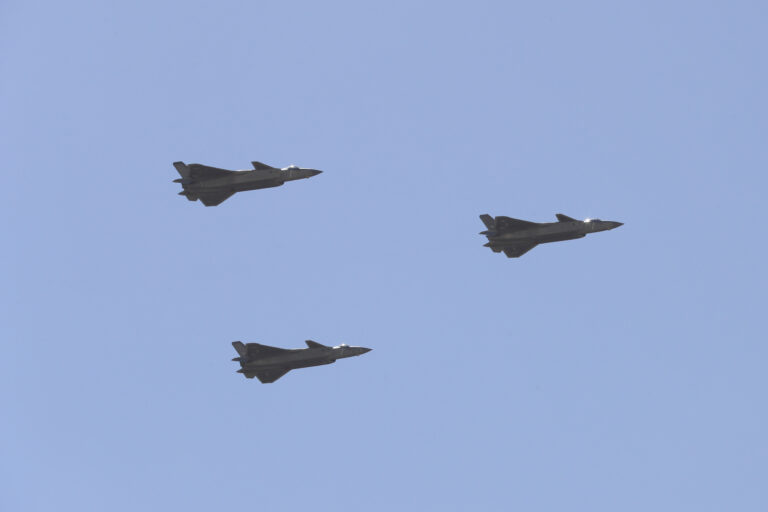China’s Chengdu J-20 fighter jets, despite their advanced capabilities, are inferior when compared to the US-made F-35 fighter jets, experts have argued.
“The J-20 has more onboard fuel capacity than the F-35, but it is also a larger aircraft. The J-20’s range is the same or shorter than that of the F-35. Also, unlike the F-35, the J-20 cannot carry air-to-ground bombs onboard. This is a fundamental limitation of the J-20,” said Kim Min-seok, a researcher at the Korea Defense and Security Forum. Newsweek In an interview.
With the J-20 introduced in 2017, China became the third country after the United States and Russia to field fifth-generation stealth fighter jets designed to evade radar detection. Estimates are that the Chinese military may operate as many as 250 of the jets.
The J-20, which is equipped with an array of sensors and can carry China’s longest-range PL-15 air-to-air missiles, is being continually upgraded. Its primary role is air superiority, giving China an advantage over India’s aging fleet of fighter jets along their tense Himalayan border. J-20 jets were recently spotted at Shigatse Air Base in Tibet, close to the border with India. Newsweek It was recently reported.
The WS-10 engine was designed as the original engine for the J-20’s initial prototypes, but there have been suggestions that a more powerful engine might be developed for the jet.
“It has been pointed out that China’s WS-10 engine resembles the U.S. F101 engine, but it is clear that China’s jet engines were developed without direct U.S. assistance. The J-20’s WS-15 engine is powerful, but its performance is expected to be inferior to that of the U.S. engine,” Kim said. Newsweek.
Since its introduction, the J-20 has undergone a series of upgrades, including new, more powerful WS-15 engines, which were spotted during tests in Chengdu in 2023.
Four days after the end of last year’s Paris Air Show, a video surfaced of China’s J-20 stealth fighter jet making its first public flight equipped with two domestically-made WS-15 engines. The Aviation Industry Corporation of China has not commented on the video, but its presence online suggests that the state-owned plane maker, and by extension Beijing, are keen for it to be made public.
This is not the first time the WS-15 has been installed on the J-20, but footage showed the fighter jet flying with one WS-15 engine and one older engine during a test flight in 2022. China’s efforts to develop advanced fighter engines indigenously have lagged behind for years, but the installation of two engines marks the maturity of its cutting-edge turbofan engines.
“The WS-15 will provide more thrust than the interim engine, allowing the J-20 to achieve even better maneuverability than it currently does, among other capabilities, and also enable consistent true supercruise (supersonic speeds without afterburners), further enhancing the aircraft’s general air superiority role,” aviation expert Rick Joh wrote in Asia Security Affairs. DiplomatAugust 1, 2023.
The F-35 jet is powered by Pratt & Whitney’s F135 engine, which was developed for all three versions of the jet, including the conventional take-off and landing (CTOL) F-35A, the short take-off and vertical landing (STOVL) F-35B, and the carrier-based F-35C.
Producing more than 40,000 pounds of thrust, the Pratt & Whitney F135 engine powers the F-35 fighter jet. It boasts an unparalleled low-observable signature, world-class thermal management and the most advanced integrated engine control system ever built.
Newsweek The Chinese Ministry of Defense and the US Department of Defense have been contacted for comment.

STR/Getty Images News/WireImage
According to Pratt & Whitney, the F135 is the most powerful, advanced and reliable fighter engine ever built, offering significant improvements in readiness and reliability over fourth-generation fighter engines.
The engine delivers unparalleled performance, enabling it to operate in the most advanced threat environments, and according to Pratt & Whitney, it will redefine what’s possible for its customers and their missions.
“The J-20 is faster than the F-35, but the Lightning II has a smaller radar cross section. The J-20 lacks a cannon, so its designers may not have envisioned it as a dogfighter. The F-35 is lighter, which could give it an advantage in aerial combat,” Brent Eastwood, a fellow at the Washington think tank R Street Institute and a former infantry officer, wrote in International Affairs magazine. National Interest.

BO AMSTRUP/AFP via Getty Images
Rare knowledge
Newsweek is committed to challenging conventional wisdom, seeking common ground and finding connections.
Newsweek is committed to challenging conventional wisdom, seeking common ground and finding connections.

